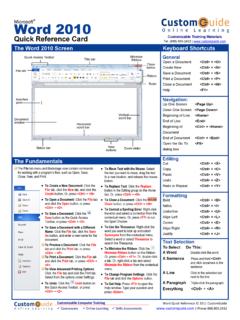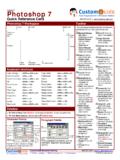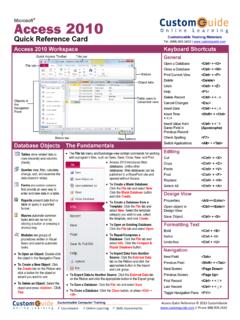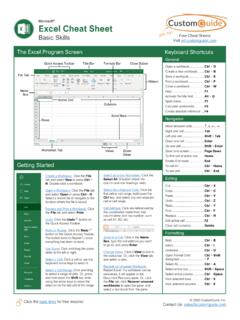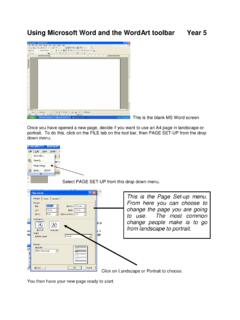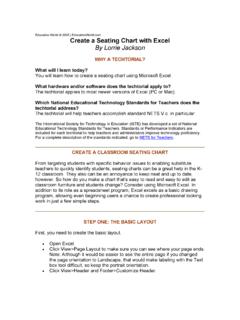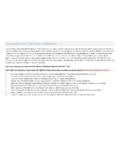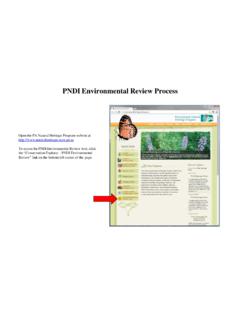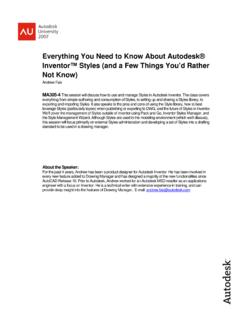Transcription of Visio Quick Reference, Microsoft Visio 2003 Cheat …
1 Microsoft Visio 2003 Quick reference Card The Visio 2003 Workspace Keyboard Shortcuts The Fundamentals The Standard toolbar To Find a Shape: Type what you re looking for in the Search for shapes box in the Shapes window and click the Search button. To Select Objects: Click and drag around the objects you want to select with the pointer tool. Click the Pointer Tool button list arrow to use the other selection tools: Lasso Select or Multiple Select. To Create a New Diagram from a Template: Select File New Choose Drawing Type from the menu, select a diagram type from the Category list, and select a template. Or, click the New button list arrow, select a diagram type and select a template.
2 To Create a New Diagram from Scratch: Click the New button, or press <Ctrl> + <N>. To Open a Diagram: Click the Open button on the Standard toolbar , or select File Open from the menu, or press <Ctrl> + <O>. To Save a Diagram: Click the Save button on the Standard toolbar , or select File Save from the menu, or press <Ctrl> + <S>. To Print a Diagram: Click the Print button on the Standard toolbar , or select File Print from the menu, or press <Ctrl> + <P>. To View a Diagram in Full Screen Mode: Press the <F5> key. Use the mouse or the arrow keys on the keyboard to navigate between pages. To Change Page Orientation: Select File Page Setup from the menu and select Landscape or Portrait under Orientation.
3 To Use a Tool: Click the tool button list arrow and select the tool. Connector: Click and drag between connection points to connect shapes Connection Point: Press <Ctrl> and click to add a connection point. Text: Click the drawing page to insert a text block. Text Block: Select or rotate a text block. To Use the Drawing toolbar : Click the Drawing Tools button to open the Drawing toolbar . Rectangle: Draw a rectangle shape. Ellipse: Draw an ellipse shape. Line: Draw a line. Arc: Draw an arc. Freeform Shape: Draw a freeform shape. Pencil: Change the curve of a freeform shape.
4 Actual Size <Ctrl> + <Shift> + <I> Align Shapes <F8> Bring to Front <Ctrl> + <Shift> + <F> Send to Back <Ctrl> + <Shift> + <B> Cascade <Alt> + <F7> Cut <Ctrl> + <X> Copy <Ctrl> + <C> Duplicate <Ctrl> + <D> Field <Ctrl> + <F9> Fill <F3> Flip Horizontal <Ctrl> + <H> Flip Vertical <Ctrl> + <J> Toggle Glue <F9> Group <Ctrl> + <G> Ungroup <Ctrl> + <Shift> + <U> Display Help <F1> Insert Hyperlink <Ctrl> + <K> Line <Shift> + <F3> Macros <Alt> + <F8> New Drawing <Ctrl> + <N> Open <Ctrl> + <O> Close File <Ctrl> + <F4> Full Screen <F5> Print Preview <Ctrl> + <F2> Redo <Ctrl> + <Y> Undo <Ctrl> + <Z> Repeat <F4> Find <Ctrl> + <F> Rotate Left <Ctrl> + <L> Rotate Right <Ctrl> + <R> Save <Ctrl> + <S> Save <Alt> + <F12> Workspace Toggle Snap <Shift> + <F9> Snap and Glue <Alt> + <F9> Spelling <F7> Formatting Text Bold <Ctrl + <B> Italics <Ctrl + <I> Underline <Ctrl + <U> Double <Ctrl> + <Shift> + <D>Underline Small caps <Ctrl> + <Shift> + <K> Ruler Menu Bar Title Bar Standard toolbar Formatting toolbar Vertical Scroll BarHorizontal Scroll Bar Status Bar Page tabs Shapes Shapes window Stencils New Open Save Print Print Preview Spell Check Cut Copy Paste Format Painter Undo Redo Delete Shapes Pointer Tool Text Tools ConnectorTools Zoom Help Drawing Tools E-mail Research Drawing | Customizable Business | 9 Online Learning 9 Skills Assessments 9 Courseware
5 2010 CustomGuide Stencils Diagram Types and Templates The Stencil toolbar A stencil is a collection of shapes related to the template you are currently working on. Each template has a different set of stencils assigned to it. To Open a Stencil: Click the Shapes button on the Standard toolbar or select File Shapes Open Stencil from the menu. To Move a Stencil: Click and drag the stencil by its title bar to a new location in the program window. To Remove a Stencil: Right-click the stencil and select Close from the shortcut menu. To Create a New Stencil: Select File Shapes New Stencil from the menu and add the desired shapes to the stencil. Shapes The Actions toolbar To Insert a Shape: Click and drag the shape from the stencil to the desired location in the diagram.
6 To Delete a Shape: Select the shape(s) and press <Delete>. To Add Text to a Shape: Click the shape and start typing. To Move a Shape: Select the shape and drag it to a new location. To Resize a Shape: Select the shape and drag one of its sizing handles. Tip: the status bar displays the actual size of the selected shape. To Align Shapes: Select the shapes you want to align and press <F8>, or click the Align Shapes button on the Actions toolbar , or select Shape Align Shapes from the menu. Click the alignment you want to use and click OK. To Distribute Shapes: Select the shapes you want to distribute and click the Distribute Shapes button on the Actions toolbar , or select Shape Distribute Shapes from the menu.
7 Click the distribution you want to use and click OK. To Connect Shapes: Select the shapes you want to connect and click the Connect Shapes button on the Actions toolbar , or select Shape Connect Shapes from the menu. Or, click the Connector Tool button on the Standard toolbar and draw a connector line from one connection point to another. To Lay Out Shapes: Select the shapes you want to lay out (or select none if you want to lay out all shapes) and click the Lay Out Shapes button on the Actions toolbar , or select Shape Lay Out Shapes from the menu. Select the lay out formatting or properties you want to use and click OK. To Format Shapes: Select the shape you want to format, click the Fill Color or Line button list arrow, and select an option from the list.
8 Or, select Format Fill or Line from the menu. To Group Shapes: Select the shapes you want to group and click the Group button on the Actions toolbar , or select Shape Grouping Group from the menu, or press <Ctrl> + <G>. There are 16 different diagram types and a total of 67 diagram templates in Visio 2003 . However, Visio Standard does not have as many templates as Visio Professional. A template predetermines everything you need to create a specific type of drawing. Diagram Types Block Diagram: Create general-purpose diagrams using geometric shapes. Templates: Basic Diagram, Block Diagram, Block Diagram With Perspective Brainstorming: Create diagrams to assist in writing thoughts for planning, decision making and problem solving.
9 Templates: Brainstorming Diagram Building Plan: Organize layouts of a building's interior, such as office cubicles, walls, doors, windows, electrical fixtures, plumbing, or plan an outside space. Templates: Electrical and Telecom Plan, Floor Plan, Home Plan, HVAC Control Logic Diagram Business Process: Organize various aspects of a business with templates that organize finances, cause and effect, workflow, and more. Templates: Audit Diagram, Basic Flowchart Charts and Graphs: Use for financial and sales reports, budgets, sales pyramids, task management. Templates: Charts and Graphs, Marketing Charts and Diagrams Database: Document, design and generate databases.
10 Templates: Database Model Diagram, Express-G, ORM Diagram Electrical Engineering: Create diagrams for basic and advanced electrical systems. Templates: Basic Electrical, Circuits and Logic, Industrial Control Systems, Systems Flowchart: Flowcharts are visual representations of a process. Templates: Basic Flowchart, Cross Functional Flowchart, Data Flow Diagram, IDEFO Diagram, SDL Diagram Map: Use to assemble simple 2-D or 3-D directional maps. Templates: Directional Map, Directional Map 3D Mechanical Engineering: Create pneumatic or hydraulic system diagrams, and assembly instructions. Templates: Fluid Power, Part and Assembly Drawing Network: Diagram an organization's network, including the cabling and physical hardware.

